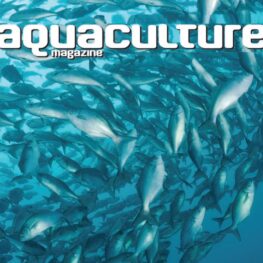Categories
Aquaculture Publications 2021Synergistic effects of the soapbark tree, Quillaja saponaria and Vitamin E on water quality, growth performance, blood health, gills and intestine histomorphology of Nile tilapia, Oreochromis niloticus fingerlings
a Asmaa Elkaradawy, b Mohamed M. Abdel-Rahim, c Aishah E. Albalawi, d Norah A. Althobaiti, a Ahmed M. Abozeid, a,* Radi A. Mohamed
b Aquaculture Division – Fish Rearing Lab (NIOF)
Aquaculture Reports, 2021, 20
https://doi.org/10.1016/j.aqrep.2021.100733
(Indexed in Scopus)
Abstract:
This study aimed to evaluate the synergistic effects of Quillaja saponaria (QS), and Vitamin E (VE) on water quality, fish performance, and health of Oreochromis niloticus fingerlings. Fish (N = 120, 12.75 ± 0.289 g) were randomly distributed in triplicates into four experimental groups. (1) the control group (CG), fish received a basal diet; (2) the Quillaja saponaria group (QS), fish received a basal diet containing 300 mg kg 1 QS extract; (3) Vitamin E group (VE), fish received a basal diet supplemented with 400 mg kg 1 VE; and (4) QS/VE group, fish received a basal diet supplemented with a mixture of 300 mg kg 1 QS extract and 400 mg kg 1 VE. Fish fed experimental diets (30/6, protein/lipids ratio) for 60 days. Results revealed a significant decrease of total ammonia nitrogen and unionized ammonia in fish fed QS/VE, VE, and QS compared to CG. Fish provided QS and/or VE showed a significant improvement in growth and feed utilization indices compared to CG (P < 0.05), with the best results in QS/VE group. QS and/or VE’s dietary supplementation did not improve hematological parameters. However, a significant improvement of serum analyses (total protein, albumin, globulin, A/G ratio, cholesterol, and triglycerides) was recorded in fish fed QS and/or VE compared to CG with the best values in QS/ VE. Digestive enzyme activity (lipase, amylase) and oxidative parameters (SOD, CAT) were significantly increased with QS and/or VE dietary supplementation, and the best findings were recorded in QS/VE. Gill necrotic tissues were alleviated in fish fed QS or/and VE. The intestinal health (villi length, villi surface area, and goblet cells count) showed a significant improvement by dietary QS or/and VE, with the best findings in fish received QS/VE. In conclusion, QS and/or VE’s dietary supplementation improves water quality, fish performance, blood health, gills, and intestine health of Nile tilapia.
Keywords: Nile tilapia , Quillaja saponaria extract, Vitamin E, Digestive enzymes, Antioxidant activity, Gills health, Intestinal morphometry
Corresponding author e-mail: [email protected] (R.A. Mohamed).






